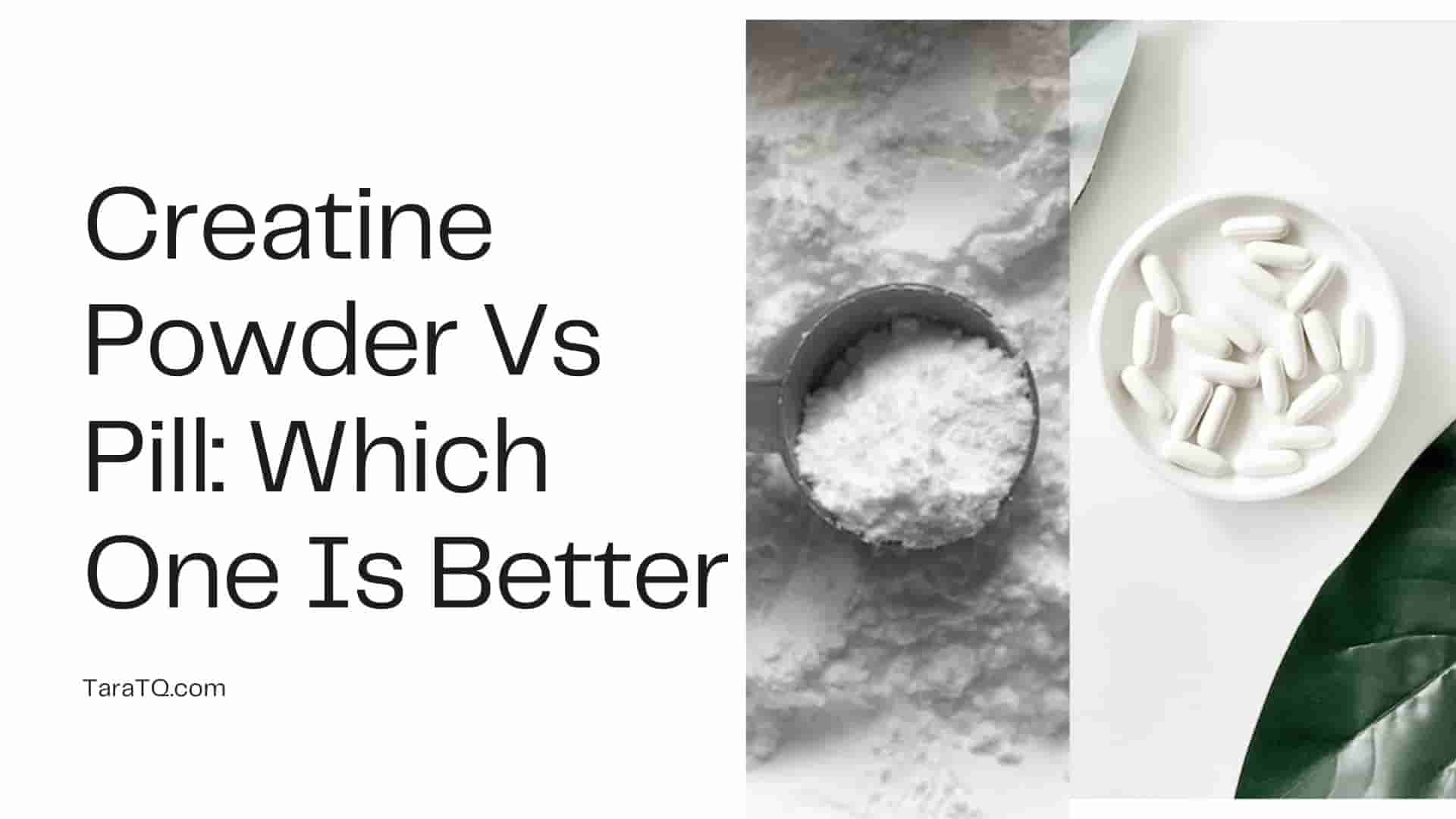Creatine monohydrate is a popular supplement for growing muscle, but its effectiveness is still debated. Creatine monohydrate has been the most extensively studied form of creatine, and it is generally agreed that it is the best combination of performance and cost.
The ideal creatine form is one such issue that needs addressing. Creatine is often found in powder or capsule form. There is no hard evidence to suggest one form is superior to the other; nevertheless, as both forms are converted to phosphocreatine in the stomach, it stands to reason that they are functionally equivalent.
While the term “better” may be subjective, there is no doubt that they can be compared in a practical sense.
Creatine powder form instantly absorbs in your body compare to pills because pills first digest in your body then start to kick in.
Creatine Capsules Vs. Creatine Powder
1. Ease of use
Capsules beat out powder because they are easier to transport. This is especially useful for those who often visit the gym; with creatine capsules, they may keep a supply on hand and take one whenever they feel the need.
The convenience of creatine capsules compared to creatine powder is a further benefit. Instead of having to measure and combine powder, all you have to do with capsules is grab the proper amount. In addition, there is no need to have anything else on hand to mix the creatine powder with.
If you prefer not to take a large number of pills at once, you can combine creatine powder with other powdered supplements (such as protein powder, BCAAs, L-Glutamine, etc.) into a single drink.
2. Cost
Creatine capsules have a much higher cost per serving than creatine powder. You may expect to pay anywhere from $5 to $10 more for a creatine capsule than you would for creatine powder.
First impressions suggest that the per-serving price of powder and capsules are around the same. However, if you do the math, you’ll see that the capsules only provide 2.5g of creatine monohydrate per serving, while the powder provides 5g. That makes the price per serving $0.3698 instead of $0.1849.
For the sake of a fair comparison, I’ve included the cost of 300 grammes of both the capsule and powdered forms. As you can see, the powdered version is considerably cheaper than the capsule form.
3. Portion Size
A further problem with capsules is the quantity; in order to take in the recommended 5g of creatine, you will need to swallow at least four large tablets (depending on the serving size), whereas you would only need to use one teaspoon of creatine powder.
There is no one best way to take creatine, so you can’t go wrong with any of the available options. The bottom line is satisfying your individual requirements. If you’re looking for a cost-effective supplement, use creatine powder. And if you want to take things easy, creatine pills are your best bet.
The micronized powdered versions of creatine are the best since they dissolve quickly and completely without forming clumps. Optimum Nutrition’s Micronized Creatine Powder is a top-notch product that won’t break the bank.
Price Difference: Pills vs Powder
Powdered creatine is also more cost-effective than tablet forms. 500 grammes of creatine may be purchased for about $12 to $15, however the same amount of creatine in pill form would cost you twice or even three times as much.
So, creatine powder is the superior choice for the majority of people. It’s easier on the wallet and the digestive system compared to tablets. The one drawback is the additional effort required to combine the powder with a liquid. Again, for most people, the added advantage that powders give makes this extra effort well worth it.
When Should I Take Creatine Powder for Maximum Results?
The optimal time to consume creatine is a frequently asked question in the modern world. Creatine supplements can often be consumed anytime you like. Why? Because creatine doesn’t deliver fast results.
On days when you plan to exercise, the best time to take it is either right before or right after your workout. Taking this approach will maximise the benefits of creatine consumption. And on days when you don’t exercise, you can take it whenever you like.
The most important thing is to take it regularly so that your body can function at its best when it has the necessary nourishment. Since creatine acts by building up in the system, regular consumption is significantly more important than timing.
Powdered Protein vs. Creatine Powder
Even though they have some similarities, protein powder and creatine powder serve different functions in the body. Creatine is a tripeptide, meaning it is made up of three different amino acids.
- It helps the body generate energy and may even have a restorative effect on the brain.
- Protein, in the form of protein powder, is a source of amino acids. When taken orally, amino acids help the body make hormones and enzymes, as well as cells, neurotransmitters, and antibodies.
Developing and fixing
- Muscles need protein for growth and repair, and protein helps with that. Creatine, on the other hand, helps most while we’re actually working out.
- It doesn’t matter when we take our creatine, as long as we do. Protein powder can be consumed whenever we like, however taking it before and after a workout might be optimal.
- Protein powder consumed before exercise has been shown to improve performance and speed up the recovery time afterward. The use of protein powder after exercise has been shown to aid in recovery and prevent muscle protein breakdown.

